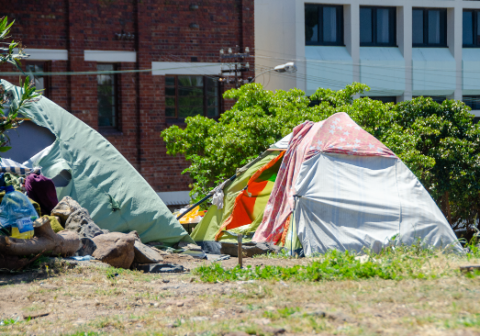Government & Politics Voice of the Local Government
Resilience Needed To Fight The Effects Of Climate Change
Climate change is the current hot topic, and there can be little doubt it is going to have a significant impact on major urban centres, particularly those near the coast. However, these and other cities that may potentially be impacted by this can be at least somewhat prepared, by doing their best to become resilient.
A resilient city must be able to assess, plan and act to prepare and respond to hazards — be they natural or man-made, sudden or slow onset, and expected or unexpected. While climate change could be termed a “natural” hazard, cities today must also contend with rapid migration, unemployment, lack of housing and similar challenges, all of which are occurring with increased magnitude and unpredictability and also demand high levels of resilience.
Local governments must be recognised as key development actors at the global level and must be given proper resources to fulfil their role as agents of change. Municipalities are leaders in finding solutions to national and international challenges. They work at the coalface of service delivery and, as such, have the experience and the know-how to get the job done.
According to Esteban Leon, head of the City Resilience Profiling Programme at UN-Habitat and a delegate at the UCLG Congress in eThekwini, climate change cannot be considered a distant threat to future generations; it is the most pressing and challenging issue for humanity today.
“Regardless of its causes, the observed impacts of climate change are bringing the sensitivity of natural and human systems to the forefront. Although all people are affected, it is the poorest and most vulnerable who pay and will continue to pay a proportionately higher price as disruption, deterioration, displacement or even destruction of human life becomes more frequent,” he explains.
“The most common manifestations of climate change are altered weather patterns, rising sea levels and more extreme meteorological events. Local governments are often at the forefront of efforts to build resilience to climate change, but lack the capacity, tools and resources to tackle the issue confidently.”
So far, continues Leon, the main barriers to initiating resilience building in affected cities are the same: verifiable information and data along with buy-in from stakeholders.
“The good news is that more data than ever before is now available, and from a wider range of sources too. It is, essentially, a limitless source of information that cities can potentially tap into. The bad news is that not all cities have equal access to this information or the resources required to gather and analyse it.
“The answer is to build buy-in by leveraging support among key actors and encouraging them to work collaboratively in citywide resilience vision as opposed to a silo approach. This will undoubtedly help to address this gap,” Leon says.
Nature-based solutions
Nature-based solutions (NBS) are increasingly being applied to guide the design of resilient landscapes and cities to enable them to reach economic development goals with beneficial outcomes for the environment and society.
NBS is also referred to as green or natural infrastructure, and can be applied at varying scales — household, building, city, and even broader landscapes — to provide valuable ecosystem services for climate regulation.
Coastal cities can benefit from natural protections like mangroves, sand dunes and oyster beds to protect large populations, economic assets and critical infrastructure. Mangroves, for example, contribute to the attenuation of waves and winds, and, therefore, reduce destructive impact on the built environment, while also decreasing coastal erosion and helping build up and bind soils to mitigate sea level rise hazards.
At the community level, encouraging green infrastructure practices like rain gardens, permeable pavements, infiltration planters and rainwater harvesting systems that support climate adaptation by better managing stormwater to prevent urban flooding.
Street trees are noted as being especially valuable in alleviating the urban heat island effect through the process of evapotranspiration, thus alleviating high temperatures in central business districts with high buildings and excessive amounts of impervious surfaces. Finally, at larger scales, the preservation and restoration of natural landscapes such as forests, flood plains, and coastal wetlands are important for supporting the creation of carbon sinks for carbon dioxide removal and sequestration.
The International Council for Local Environmental Initiatives (ICLEI), a global network of cities, towns and regions committed to building a sustainable future, indicates that climate change, energy and resilience are all issues of extreme relevance to African cities.
ICLEI, which is discussing such nature-based solutions at the UCLG Congress, explains that these include low-emission development, climate change adaptation, access to finance and energy, resilience and disaster risk reduction. The overarching goal is to co-develop sustainability solutions within cities with the aim of enhancing urban resilience on the continent.
Jason McNeil, CEO of SA-based Interwaste, adds that a key part of natural resilience is to implement the circular economy, a model that aims to strip out all unnecessary waste materials, energy losses and related carbon emissions across supply chains. “Furthermore, it promotes — through integration and innovation — closing the gaps to allow materials, energy and resources to be ‘fed’ back into the cycle. The consensus is that the linear model of the past to ‘make-use-dispose’ must be done away with. Instead, we need to implement a more sustainable ecocycle, which can be achieved through long-term design and planning, maintenance, repair, reuse, remanufacturing, refurbishing, recycling and upcycling,” he says.
The final piece of the puzzle, according to Delia Paul, thematic expert for poverty reduction, rights and governance at the SDG Knowledge Hub, is the need to manage water through the lens of resilience.
She explains that UN-Water launched a 20-page “Water and Climate Policy Brief” at the 2019 session of the UN High-level political forum on sustainable development.
“This recommends policies that will ensure the representation, participation, behavioural change and accountability of all stakeholders, as well as adaptation plans that will assist lower-income populations and those who are disproportionately affected by the impacts of climate change,” she says.
“UN-Water calls for more investment in producing better hydrological data, strengthening institutions and governance of water resources, conducting risk assessments, sharing knowledge, educating water users and building capacity for better water management,” she concludes.






 Sign-up and receive the Business Media MAGS newsletter OR SA Mining newsletter straight to your inbox.
Sign-up and receive the Business Media MAGS newsletter OR SA Mining newsletter straight to your inbox.